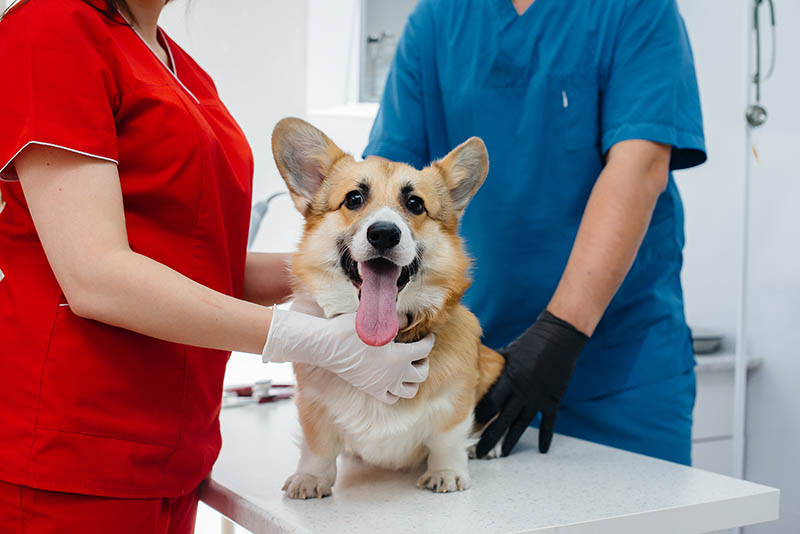How Long Do Mastiffs Live? Average Lifespan, Data & Care Guide
By Hanh Duong
Updated on

Click to Skip Ahead
The large and majestic Mastiff is one of the earliest dog breeds known to humans. Over the centuries, they were used in guarding, battle, hunting, and gladiator sports. Today, many members of the Mastiff family become devoted pets in their owners’ homes, and they still take their responsibility to defend those they love very seriously. Tons of owners and fans of this breed are concerned about how long a Mastiff can live. They wonder why Mastiffs have such a short lifespan of only 6 to 10 years.
Of course, you want your pet to live forever, but you’ve undoubtedly noticed that the Mastiff has one of the shortest average lifespans among canines. Read on below to find out more.
What’s the Average Lifespan of a Mastiff?
Mastiffs typically live for 6 to 10 years. These large dogs age more quickly than smaller canines, which explains why they don’t have a long lifespan. In addition, a relatively short life is also a result of the breed’s high cancer incidence and osteosarcoma, lymphoma, and mast cell tumors are among the most common.
Even though you can’t change your dog’s propensity for certain diseases like cancer, you can considerably improve their chances of living a long and happy life by providing them with high-quality food and bringing them to the vet for regular check-ups.

Why Do Some Mastiffs Live Longer Than Others?
1. Nutrition
Like people, your dog’s longevity is significantly influenced by what they eat. A balanced diet will partly guarantee the health and longevity of a Mastiff. Dogs are omnivores, meaning they should consume both meat and plants.
When reading labels on the food you intend to give your Mastiff, look for harmful components like high sugar content, meat byproducts, and unnecessary additives. Additionally, you might want to think about how much food you’re feeding them. Talk to your vet to ensure you’re doing it the right way.
2. Exercise
The secret to improving the health and longevity of your Mastiff is to lead an active lifestyle. Regular exercise will boost energy levels, lower stress, and help them keep a healthy weight, whether it’s a daily stroll, jog, or trip to the dog park where your pet can run free. Not to mention the interactions that may happen at the park, it’s good for your dog’s physical and mental well-being if they have opportunities to play with other furry friends.

3. Dental Hygiene
Regular brushing can lengthen your dog’s life because it helps avoid gingivitis, plaque, and bacterial infections. You don’t have to do it every day. Work your way up to 3 days per week at first. Dog dental treats are also widely available and can assist in teeth cleaning without causing discomfort.
4. Regular Vet Visits
A Mastiff has a much better chance of living a longer and healthier life if they have at least one annual vet appointment. The frequency of your dog’s checkups should be increased to every 6 months once they reach senior status. It is essential because, even if something seems minor, it could become a dangerous problem if not caught early.

5. Supplements
Prevention is always better than cure, and using supplements is not only limited to humans! There are many beneficial supplements available for our furry friends to help prevent diseases like arthritis and vision problems, as well as to help keep their coats and nails strong and healthy. But before buying any supplements, you should consult with your vet.
The 4 Life Stages of a Mastiff
1. Puppy
The puppy period lasts from the time your Mastiff is born until the dog is 6–18 months old. They are blind, deaf, and cannot regulate body temperature when they are newborns. Puppies begin to see and hear around 2–3 weeks. They can also stand and walk around a little at this time and are starting to learn about their environment as their senses have developed. The best opportunity to improve their social skills with people and other animals is in these early months. During this phase, it’s crucial to housetrain your Mastiff and ensure they receive all the vaccinations and care your vet suggests.
2. Adolescent
Your Mastiff dog will enter the adolescent stage between 6 and 18 months. They may seem reluctant to focus and more likely to engage in unwanted behavior. They also become more interested in urine marking and sniffing, and females will go into their first heat.
Your dog could be in this stage until they’re 36 months old. Training these canines with gentle and consistent techniques is highly recommended and can help to prevent behavioral issues.

3. Adulthood
For larger breeds like the Mastiff, the adult stage usually begins around 3 years old. Although your dog still enjoys walking, playing, and being mentally stimulated, they will become easier to handle as their previous training begins to bear fruit. This phase of your Mastiff’s life gives you a great time to look for things you and your dog can do together, like agility training or walking.
4. Senior
Dogs live short lives, but they bring so much pleasure into our lives. Additionally, larger dog breeds like the Mastiff usually age more quickly. As a dog’s golden years will start approximately between 6 and 10 years old, it’s crucial to cherish each stage.
Senior dogs will slow down, choosing peaceful walks over energetic runs. Joint or tooth problems are more frequent. Therefore, regular vet appointments are a must at this phase.

How to Tell Your Mastiff’s Age
Knowing your Mastiff’s age will help you make decisions about what to feed them, whether or not they require any preventative care, and how to give your beloved animal the best life. But how can you tell how old your dog is if they weren’t puppies when you got them? A reliable method to determine a dog’s age is to look at their teeth. Although, consulting with a vet will give you the best chance of determining your dog’s age accurately as possible. Gray hair, mobility, and energy levels are additional aging indicators that you should watch out for.
Conclusion
In general, Mastiffs only stay alive for 6 to 10 years. Sadly, these canines are prone to some cancer and diseases. Regular preventative vet appointments are essential if you want to prolong their lifespan. In addition, a high-quality diet and adequate exercise will keep them healthy and delay the onset of diabetes or arthritis. When it comes to your Mastiff’s health, prevention is the key.
Featured Image Credit: Peakpx












